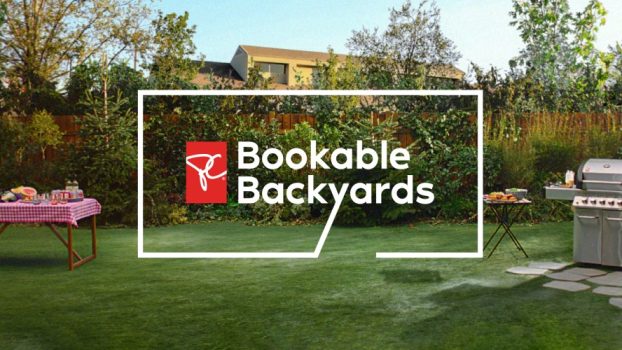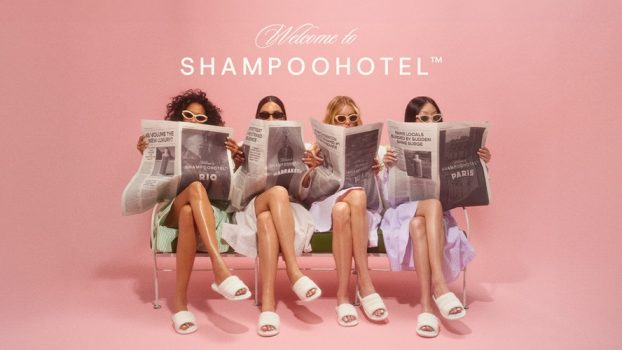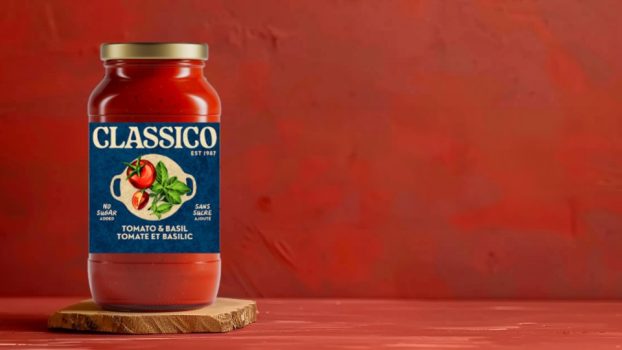Estée Lauder brought out its new Advanced Night Repair Eye Recovery Complex in January. Now L’Oreal’s luxury brand, Helena Rubinstein, has just launched its latest product in the anti-aging range. Prodigy, which claims to be the ‘most complete’ anti-aging product on the market, has been available at the brand’s two Toronto stores from March 6.
‘It is the first anti-aging product to respond to all five mechanics of aging,’ says Kristin Armstrong, brand director at Montreal-based L’Oreal. Armstrong says that the brand opts out of mainstream advertising but instead targets its several thousand loyal customers with a direct marketing campaign. A sampling event is also taking place at the brand’s Toronto Eaton Centre and Yorkdale Mall locations March 6 to 15. Women in the 25 to 45 age group are targeted with a skew towards the 30 to 35 category.
Similarly, Canderm Pharma will be debuting a new anti-aging product in late March. The latest in NeoStrata’s Wrinkle Defense line, Daytime Anti-Wrinkle Cream SPF 15, adds a new dimension to the St-Laurent, Que.-based company’s range. ‘This is one product which not only visibly reduces the effects of wrinkles but also protects against harmful UV rays during the day,’ says Annie Turenne, marketing co-ordinator.
A TV spot touting the full Wrinkle Defense product line has been on the air since November. However, for the new product, Canderm has chosen to shift its focus onto cosmeticians rather than mainstream consumers, with the use of a print ad running in cosmetics trade mags. Its first appearance will be made in the March/April issue of Cosmetics Magazine, using the message that it ‘replenishes lost collagen to visibly reduce the appearance of wrinkles.’
‘We find that educating cosmeticians is the most effective way of selling these types of products,’ explains Turenne.
And it’s not just the high-cost luxury brands that are flaunting the latest scientific break-throughs in age-reduction remedies. Many of the lower-end everyday skin-care brands are entering the realm of youth preservation. Unilever, for example, has recently added an anti-aging product to its Vaseline Intensive Care range. Renew & Protect moisturizing lotion contains SPF 5 together with the anti-aging ingredient, Retinol, to ‘re-hydrate and replenish moisture.’
In addition, Nivea has recently launched its Alpha Flavon Perfect Protection Creme. The ingredient, alpha flavon, allegedly works as an antioxidant to slow down the aging process by boosting your skin’s own age-defence system. It also contains SPF 15 and Vitamins A and E to ‘guard against skin-aging.’ Another of Nivea’s new products, Alpha-Flavon Perfect Protection Lotion, claims to offer a pre-emptive strike for younger women by preventing that first wrinkle before it even starts to form, while the brand’s Q10 range offers anti-aging treatments for all aspects of your skin-care routine.
And Revlon’s Almay brand brought its Kinetin skin-care range to the mass markets in Canada last September. Products including Age-Defying Daily Cream and Age-Defying Daily Lotion are claiming to be ‘Found in nature. Proven by science.’ Its Anti-Wrinkle Booster Serum in the same range even promises to ‘reduce the appearance of fine lines and wrinkles by 45%’ and ‘improve skin texture and smoothness by 77%.’
Even men are being told to seek the elixir of youth with products such as Arbonne’s Skin Fitness for Men Moisturizer containing the anti-aging ingredient alpha-hydroxy acids (AHAs) which apparently leave the user with ‘fewer lines and wrinkles.’
Anti-aging brands are competing not only with each other, but with an ever-increasing range of cosmetic procedures promising everlasting youth. Botox injections, for example, operate by injecting a toxin under the skin to relax the muscles that cause wrinkles. The treatment is expected to receive approval from the U.S.-based Food and Drug Administration for broader use in facial cosmetic applications, although it has been used to treat facial wrinkles since the 1990s without approval. As these procedures become more affordable and accepted, marketers may have to struggle to convince consumers to stick with old-fashioned skin-care.
In today’s skeptical society, consumers can be a difficult bunch to convince, so what is the winning formula to sell a new anti-aging product in a marketplace already riddled with rivals? Which demographic is most likely to be persuaded? And how can the lower-end product lines compete with up-market luxury brands? Strategy posed these questions to three industry thinkers.
Pat Pirisi, Co-creative director
TBWA/Chiat/Day, Toronto
Pat Pirisi suggests a shift away from the need to look younger, with more emphasis on the health benefits of a skincare product. Non-traditional advertising methods together with editorial testimonials make up the right marketing balance, he advises.
‘In the last 20 to 30 years these products have been marketing increasingly aggressively, often with the use of scare tactics, warning women that if they don’t use this product they will end up looking like an old hag and not living up to the images in the magazines.
‘I think marketers should adopt the message that if we take care of ourselves and wear sunscreen the rest will follow. The message should be that this is a product that will help you look after yourself, not something to wage the battle against aging, which is complete and utter nonsense. I think that would lift the pressure of the sale.
‘The less traditional the means of advertising the more effective it is likely to be. The trouble with TV is that we have seen it all before. PR is a good way of promoting this sort of product. If you can get the press to talk about a new product in editorials, with product reviews, that is a credible avenue that people are more likely to listen to than a regular ad.
‘[As for lower-end entries,] I don’t see any reason why this category should be restricted to wealthy women. All women are equally interested in this type of product and I don’t think many women believe that they have to spend $50 on a tiny tube in order for it to be effective.
‘Certainly the higher-end brands take full advantage of their image to sell anti-aging products at very high prices, but I think most women are aware that a soap is a soap and no matter how much it costs or how it’s packaged, the differences are minimal. So the same is likely to be true for skin-care products.
‘As for the correct age group to target, I think that the pre-emptive strike messaging has been happening for some time. Women from a very early age are taught about the horrors that await them, so I don’t think there is any age that is too young to target.’
Leanne Delap, Editor in chief
Fashion Magazine, Toronto
Leanne Delap recommends a multi-faceted marketing campaign, with a strong emphasis on the scientific ‘facts’ behind each new product. She also advises training in-store sales assistants to fully understand the benefits of each product.
‘I really do believe that the technology is better today. Some of those companies have massive scientific teams and plough huge amounts of money into anti-aging products.
‘We do inevitably get a little bit skeptical about some of these supposed new miracle ingredients, but I for one am always sucked in by the science factor, so they should definitely focus their marketing around that.
‘There always seems to be a new buzzword that people gravitate towards. Every now and then there’s a big leap forward in an area such as cell regeneration and any mention of that in your advertising will boost reception.
‘Lower-end products and luxury products are two entirely different markets, and I see no reason why they both can’t do well.
‘I think that most of the marketers probably do need to use multi-faceted marketing campaigns incorporating a mixture of counter presence, sampling programs and bonusing programs as well as TV and print advertising.
‘A lot of the higher-end manufacturers in particular put a lot of work into training their counter associates. If you can get someone really knowledgeable behind the counter, that is the way to convince a woman to spend $90 on a face cream.’
Delap believes that a number of cosmetic procedures are also set to become increasingly commonplace among women in their mid 30s+ as prices come down and consumer awareness grows.
‘Even in the fashion crowd, procedures such as Botox treatment are not that commonly used but I think it’s going to be huge in the future. Botox is the fastest growing cosmetic treatment.’
Delap gave this treatment a try for an article in Fashion Magazine’s March issue. Despite the fact that it does give ‘dramatic results’ according to Delap’s own experience, the high cost of $500 to $700 for a treatment that may last as little as three months, is likely to put many consumers off, and leave them reaching for the latest age-defying moisturizer instead.
Bruce Philp, Partner
Garneau Würstlin Philp Brand Engineering, Toronto
Bruce Philp advises a shift towards sponsorship and promotional methods of marketing, with the use of ‘real women’ such as athletes in advertising.
‘The biggest birth years of the baby boomers are now in their early 40s and are starting to deal with the issue of lines on their faces. I think women across the board are going to be interested in these products. There’s probably a belief that the more you spend the more you’ll get in return, so the lower-end products will be challenged.
‘On the other hand, when a category becomes very active as this one has, with so much marketing going on, it creates an impression that the science has made some advances, and the category has become more sociably acceptable, so that takes the burden off the marketers to some extent and makes it possible for many products within the sector to thrive.
‘The techniques which have been used to sell cosmetics for many years are always going to work, such as sampling, and developing a brand presence within the retail environment.
‘It would also be interesting to look at other ways of expressing personal empowerment. Rather than portraying a woman as a porcelain ornament, you could use an athlete in the ad for example. That is likely to generate more confidence in the consumer. This generation is hungry for every piece of evidence that they can get their hands on. Marketers would do well to look at sponsorship and promotional strategies as alternative ways of reaching the market.
‘People are more skeptical about advertising than they have been in the past, but then science keeps marching forward, so if you line up a degree of skepticism with a degree of efficiency, you’ll probably find you’re in the same marketplace today that you’ve always been in. To some extent people are willing to try anything. I’ve heard Olay described as ‘hope in a jar’ and I think that message never goes out of style.’























